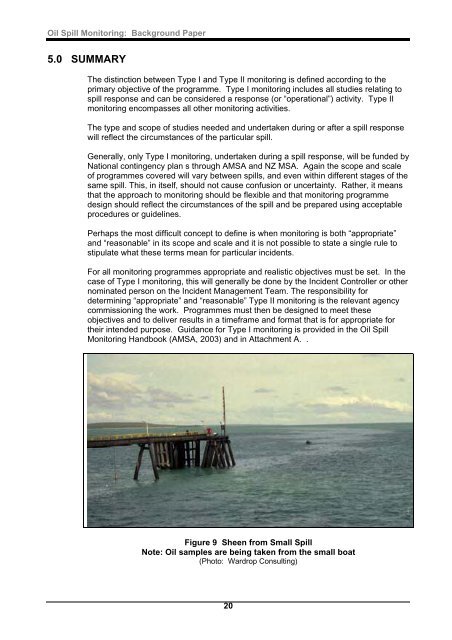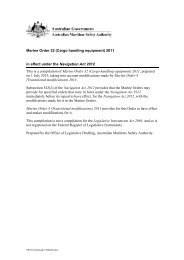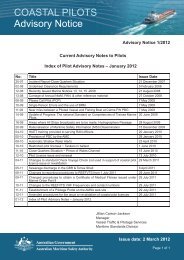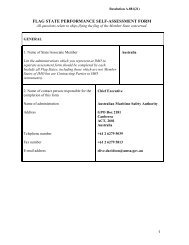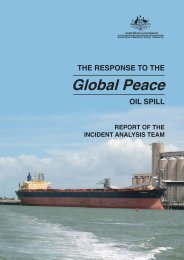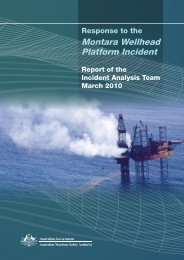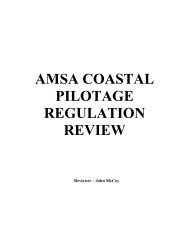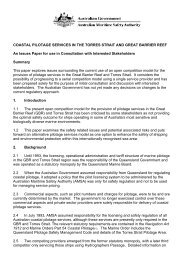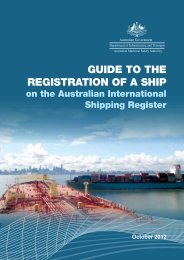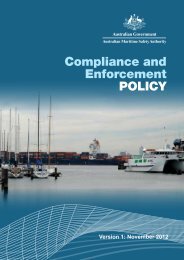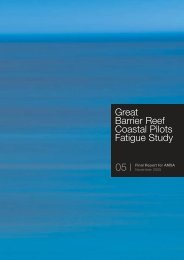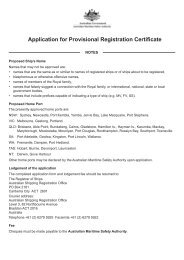Oil Spill Monitoring BACKGROUND PAPER - Australian Maritime ...
Oil Spill Monitoring BACKGROUND PAPER - Australian Maritime ...
Oil Spill Monitoring BACKGROUND PAPER - Australian Maritime ...
You also want an ePaper? Increase the reach of your titles
YUMPU automatically turns print PDFs into web optimized ePapers that Google loves.
<strong>Oil</strong> <strong>Spill</strong> <strong>Monitoring</strong>: Background Paper<br />
5.0 SUMMARY<br />
The distinction between Type I and Type II monitoring is defined according to the<br />
primary objective of the programme. Type I monitoring includes all studies relating to<br />
spill response and can be considered a response (or “operational”) activity. Type II<br />
monitoring encompasses all other monitoring activities.<br />
The type and scope of studies needed and undertaken during or after a spill response<br />
will reflect the circumstances of the particular spill.<br />
Generally, only Type I monitoring, undertaken during a spill response, will be funded by<br />
National contingency plan s through AMSA and NZ MSA. Again the scope and scale<br />
of programmes covered will vary between spills, and even within different stages of the<br />
same spill. This, in itself, should not cause confusion or uncertainty. Rather, it means<br />
that the approach to monitoring should be flexible and that monitoring programme<br />
design should reflect the circumstances of the spill and be prepared using acceptable<br />
procedures or guidelines.<br />
Perhaps the most difficult concept to define is when monitoring is both “appropriate”<br />
and “reasonable” in its scope and scale and it is not possible to state a single rule to<br />
stipulate what these terms mean for particular incidents.<br />
For all monitoring programmes appropriate and realistic objectives must be set. In the<br />
case of Type I monitoring, this will generally be done by the Incident Controller or other<br />
nominated person on the Incident Management Team. The responsibility for<br />
determining “appropriate” and “reasonable” Type II monitoring is the relevant agency<br />
commissioning the work. Programmes must then be designed to meet these<br />
objectives and to deliver results in a timeframe and format that is for appropriate for<br />
their intended purpose. Guidance for Type I monitoring is provided in the <strong>Oil</strong> <strong>Spill</strong><br />
<strong>Monitoring</strong> Handbook (AMSA, 2003) and in Attachment A. .<br />
Figure 9 Sheen from Small <strong>Spill</strong><br />
Note: <strong>Oil</strong> samples are being taken from the small boat<br />
(Photo: Wardrop Consulting)<br />
20


